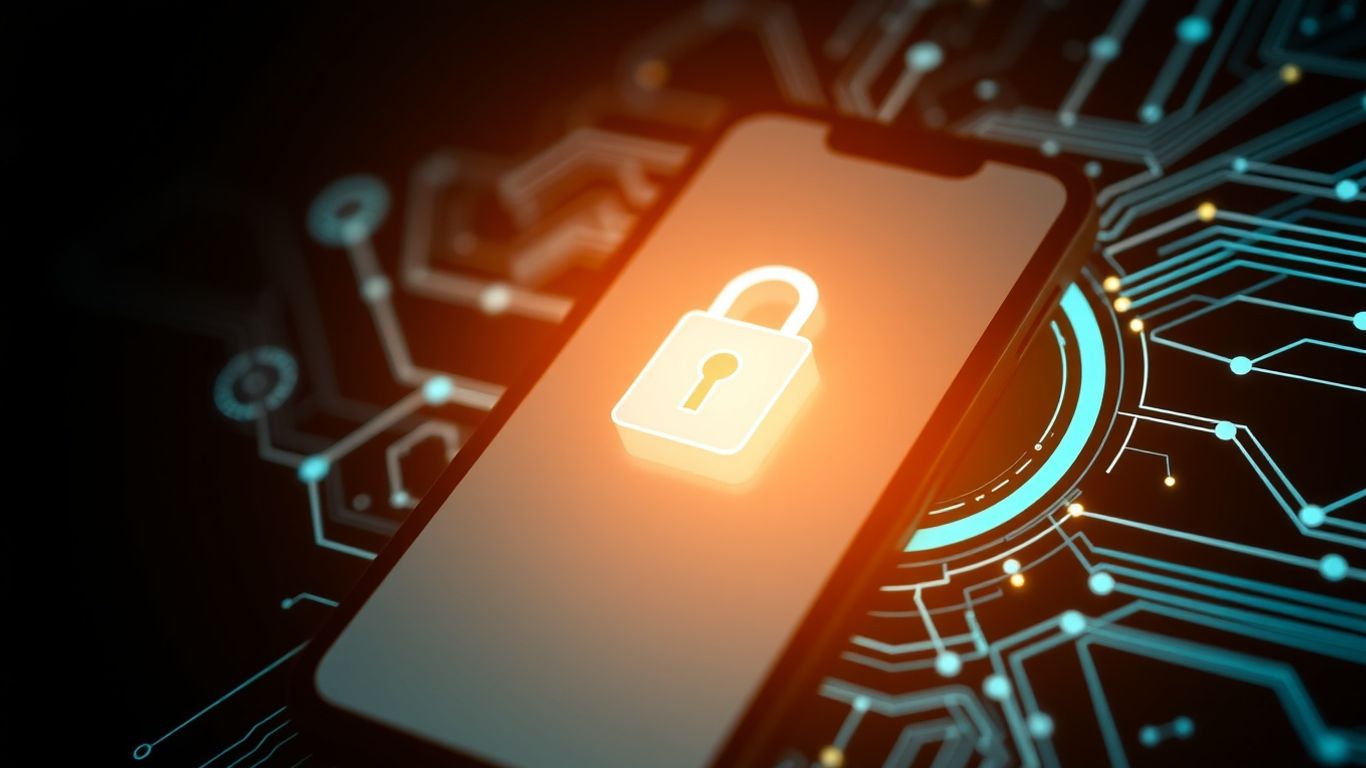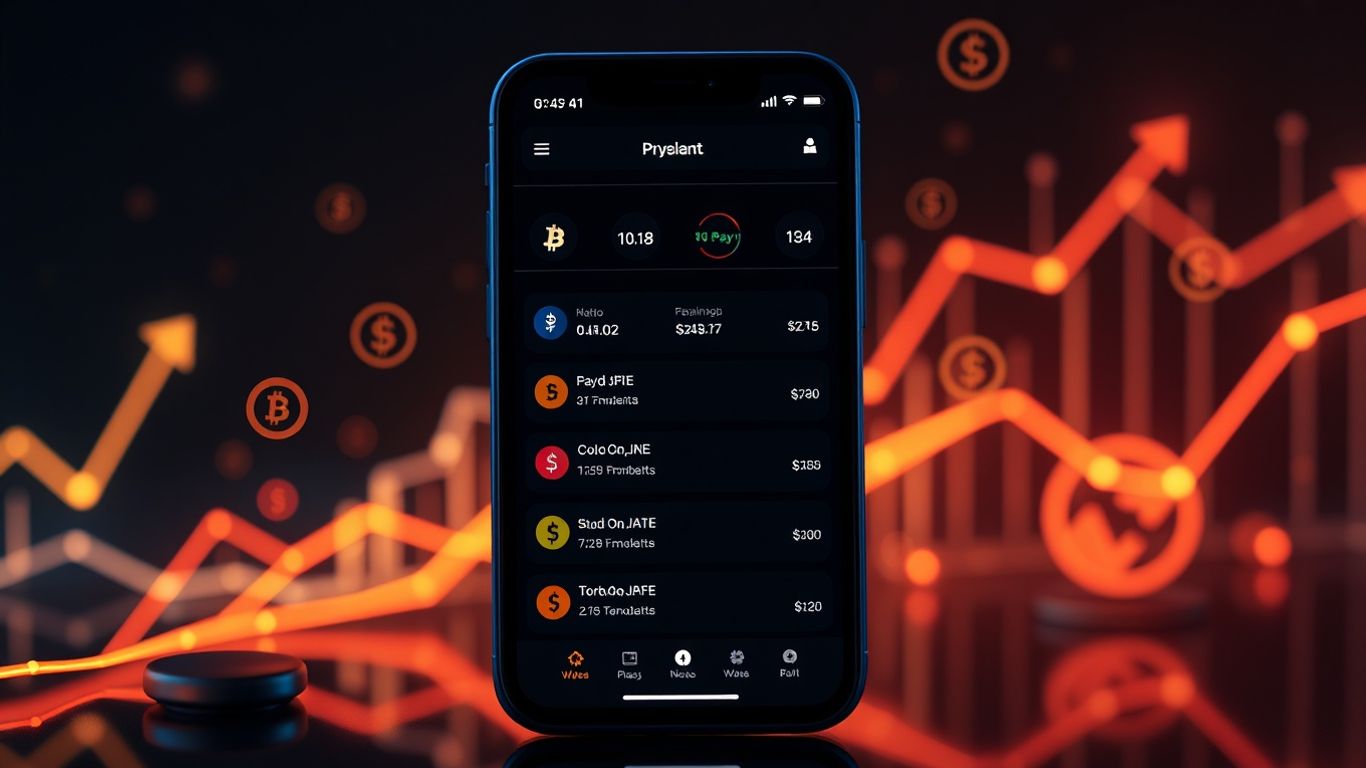[ newsletter ]
Stay ahead of Web3 threats—subscribe to our newsletter for the latest in blockchain security insights and updates.
Thank you! Your submission has been received!
Oops! Something went wrong. Please try again.
Master e-wallet app development in 2025 with our comprehensive guide. Learn strategy, security, UX, features, budgeting, and launch for success.





Thinking about making your own digital wallet app? It's a smart move, especially with how much people are using their phones for payments these days. Building one might seem like a huge task, but it doesn't have to be. This guide breaks down what you need to know for e-wallet app development in 2025, from figuring out what your app will do to making sure it's safe and easy for people to use. We'll cover the important stuff so you can get your app off the ground.
Getting your e-wallet app off the ground starts with a solid plan. It’s not just about building an app; it’s about creating a digital tool that people will trust and use every day. This means thinking carefully about what your app will do, how it will work, and what makes it stand out.
Before you write a single line of code, you need to know exactly what your app is supposed to achieve. Are you aiming for a simple way for friends to send money back and forth, or are you building something more complex, like a crypto wallet? The scope really matters. For instance, an app for a retail business might need to include loyalty programs and reward points alongside payment features. On the other hand, a peer-to-peer transfer app should prioritize speed and ease of use above all else. Ask yourself: Who are the people who will use this app? What is the main job it needs to do?
Getting the scope right from the start can prevent a lot of headaches down the road. It keeps the project focused and helps make sure you're building what users actually want and need.
Choosing the right tools for the job is super important. Think about what your app needs to do and pick technologies that fit. For example, if speed is a big deal, something like Node.js might be a good choice. If you want to get an app out quickly with less coding, Firebase could be helpful. For a crypto wallet, you'll likely need blockchain frameworks, but a retail app might benefit more from cloud services like AWS for handling lots of users. Also, consider what your development team already knows. Using familiar tools can speed things up. You can find great app development teams to help with this process.
At its heart, an e-wallet is about moving money. So, making sure the payment features are solid is key. This includes supporting various payment methods, like credit/debit cards, bank transfers, and maybe even popular digital payment services. You'll also want to think about how users add funds and withdraw money. Making these processes as smooth and secure as possible is what will keep users coming back. Think about things like QR code payments for quick in-person transactions or integrating with services that allow for easy bank linking. The goal is to make paying and getting paid feel effortless and safe for everyone involved. You might want to look into using a pre-built solution to speed up development and save resources.

When you're building an e-wallet, security and following the rules aren't just good ideas; they're the absolute bedrock. Think about it: people are trusting you with their money. If that trust is broken, your app is done. It’s like building a house without a strong foundation – it’s just not going to stand.
This is where you really need to get serious. We're talking about protecting sensitive data from folks who want to steal it. It’s a constant battle, and you need to be ahead of the game.
The digital payment landscape is always changing, and so are the threats. What's secure today might not be tomorrow. Continuous vigilance and updating your defenses are key to staying ahead of potential breaches.
This part can feel like a maze, but you have to get through it. Different countries and regions have their own rules about how financial data should be handled. Ignoring them can lead to massive fines and a damaged reputation.
It’s a good idea to work with legal and compliance experts early on. They can help you understand all the requirements for the regions you plan to operate in and make sure your app is built with compliance in mind from the start.
Building trust is an ongoing process. Users need to feel confident that their money and personal information are safe. Any slip-up can erode that trust quickly.
Here are some common risks and how to deal with them:
Ultimately, a secure and compliant e-wallet app is one that users will feel comfortable and confident using for their daily transactions.
Making an e-wallet app that people actually want to use means thinking a lot about how it feels to actually use it. It's not just about the money moving around; it's about the whole experience from start to finish. If it's clunky or confusing, people will just go back to their old ways.
Think about how you use your phone for everyday things. You want to tap something and have it just work, right? That's the goal here. We're talking about screens that make sense the first time you see them. No hunting around for buttons or trying to figure out what a weird icon means. It should be clear where to go to check your balance, send money, or pay a bill.
Here are a few things that make an interface feel good:
The trick is to make the app feel familiar, even if it's packed with features. People shouldn't have to learn a whole new way of doing things just to manage their money.
Nobody likes waiting around for a payment to go through, especially when they're trying to buy something. Speed and dependability are super important. If your app is slow or, worse, messes up a transaction, people lose trust fast.
Here's what makes transactions feel smooth:
Remembering passwords and PINs can be a pain. Biometrics, like fingerprint or face scans, make logging in and approving payments much quicker and often more secure. It's like a magic key that only you have.
So, you're building an e-wallet app for 2025. What makes one stand out from the crowd? It's not just about holding money; it's about making transactions smooth, secure, and even smart. Let's break down what users really want and what keeps them coming back.
Security is the bedrock of any e-wallet. People are trusting you with their money, so you absolutely have to get this right. Think beyond just a password. We're talking about layers of protection that make users feel safe, even when they're on the go.
Building trust is paramount. Users need to know their funds and personal information are protected from unauthorized access and potential fraud. A strong security posture directly translates to user confidence and app longevity.
Artificial intelligence isn't just for sci-fi movies anymore. In e-wallets, AI can make the app feel like it's made just for the user. It's about anticipating needs and making things easier.
Blockchain technology, the same tech behind cryptocurrencies, offers some unique advantages for e-wallets, especially when it comes to trust and transparency.
These features aren't just bells and whistles; they are the core components that build a reliable, user-friendly, and secure e-wallet that people will want to use day in and day out.

Figuring out the cost to build an e-wallet app can feel like a puzzle, but it's totally doable if you break it down. You've got to think about what you want the app to do, how secure it needs to be, and what kind of experience you want users to have. It's not just about the initial build; ongoing costs are a big part of the picture too.
The price tag for your e-wallet app really depends on the features you decide to include. A basic app that just handles simple transfers might be on the lower end, while something with more complex functions like cryptocurrency support or advanced budgeting tools will naturally cost more. Think about what's absolutely necessary for your app to work and what would be nice to have later.
Here's a rough idea of what some common features might cost:
Remember, these are just estimates. The actual cost can change based on the development team you choose and the specific details of each feature.
Security and following the rules aren't optional extras; they're fundamental. You'll need to budget for things like encryption, secure data storage, and making sure your app meets all the relevant financial regulations (like PCI-DSS and GDPR). Getting this wrong can lead to hefty fines and a serious loss of user trust, which is way more expensive in the long run.
Building a secure app from the start is always cheaper than fixing a security breach later. Think about it like building a house – you wouldn't skimp on the foundation, right?
Once your app is live, the work isn't over. You'll need to set aside money for regular updates, bug fixes, security patches, and potentially adding new features based on user feedback. A good rule of thumb is to budget about 15-20% of the initial development cost each year for maintenance. This keeps your app running smoothly and securely, which is key to keeping users happy and coming back.
So, you've got this awesome idea for an e-wallet app. You've figured out what it should do, picked your tech, and made sure it's super secure. Now what? It's time to actually build the thing and get it out there. This part is all about turning your plans into a working app and then making sure people can actually use it.
This is where the coding magic happens. Your developers will be busy building out all those features you planned. Think of it like constructing a building – you need a solid foundation and every brick in place. This involves both the front-end (what the user sees and taps on) and the back-end (the behind-the-scenes stuff that makes transactions happen and keeps your data safe).
But you can't just build and hope for the best. Testing is a huge deal here. You've got to poke and prod the app from every angle to find any glitches or bugs. This isn't just a quick once-over; it's thorough. We're talking about:
Getting this right means fewer headaches down the road and happier users. A smooth, bug-free experience is what keeps people coming back.
Building an app is a bit like cooking a complex meal. You need all the right ingredients (features), precise measurements (code), and careful cooking (development). But the most important part is tasting it along the way (testing) to make sure it's perfect before you serve it to your guests (users).
Once the app is polished and tested, it's time for the big reveal. Launching isn't just about hitting a button; it's a strategy. You'll want to get it onto the app stores, like the Apple App Store and Google Play Store. But before that, you need to make sure your back-end infrastructure can handle the load. Nobody likes an app that crashes when everyone tries to use it at once, especially during a big sale or event.
Think about scalability. If your app suddenly gets super popular, can your servers keep up? Using cloud platforms like AWS can help a lot here. It's like having an elastic band for your server capacity – it can stretch when you need it to.
Launching the app is just the beginning, not the finish line. After it's live, you need to keep a close eye on how it's performing. This means watching for any issues that pop up, tracking user behavior, and gathering feedback.
Based on this, you'll release updates to fix bugs, add new features, and generally keep the app running smoothly and securely. It's an ongoing process to make sure your e-wallet stays relevant and trusted.
So, we've gone through a lot, right? Building an e-wallet app might seem like a big task, and honestly, it is. But by breaking it down – starting small with an MVP, picking the right tools, and really focusing on keeping things safe and simple for users – it becomes much more manageable. Remember, the mobile payment world is huge and only getting bigger. Getting your app right means thinking about security from day one, making sure it follows all the rules, and most importantly, making it easy for people to use. It’s not just about moving money; it’s about building trust. With the right plan and a focus on what users actually need, you can create an e-wallet that people will want to use every day. Good luck out there!
An e-wallet app is like a digital purse on your phone that holds your credit cards, debit cards, and even loyalty cards. It lets you pay for things super fast, either by tapping your phone or scanning a code. It's important because lots of people use them now, and it makes paying easier and quicker for customers, which can help businesses make more money.
Building an e-wallet app can cost different amounts, from about $10,000 for a very basic version to $300,000 or even more for a really fancy one with lots of features. The price depends on how many cool things you want the app to do, like special security or AI features.
The top things to think about are making the app super secure so no one can steal money or information, making sure it follows all the rules and laws, and creating a design that's really easy and pleasant for people to use. Also, you need to pick the right technology to build it with so it works well.
To make an e-wallet app a hit, it needs strong security like fingerprint or face scans, the ability to make quick payments using things like QR codes or phone taps, and sometimes smart features like AI that can help users manage their money better or spot fraud. Making it easy to use is also a big deal.
You can make your app safer by using strong passwords, encrypting sensitive information (like scrambling it so only authorized people can read it), and using special codes instead of actual card numbers for payments. It's also smart to have experts check your app regularly for any weak spots and to follow all the rules for handling money online.
A simple e-wallet might just let you store cards and make basic payments. A more advanced one could handle different types of money like cryptocurrencies, offer rewards programs, use AI to give spending advice, or even have extra security layers like blockchain technology to make transactions super trustworthy and hard to mess with.


